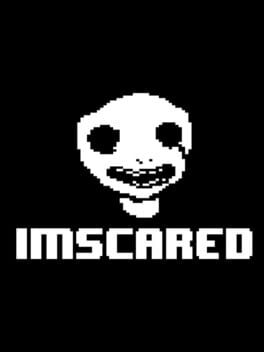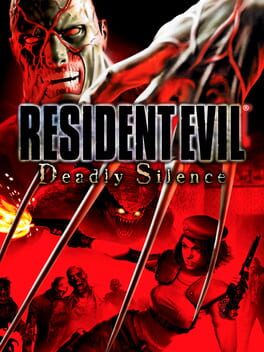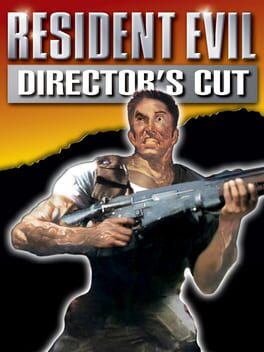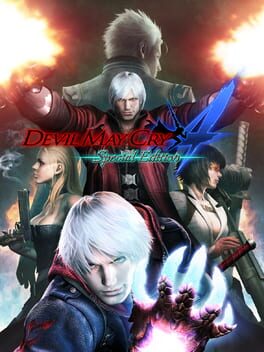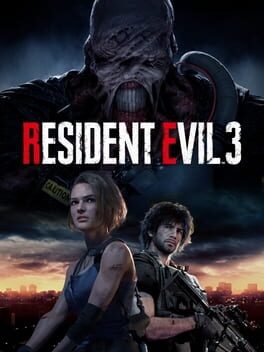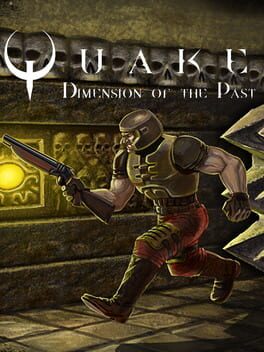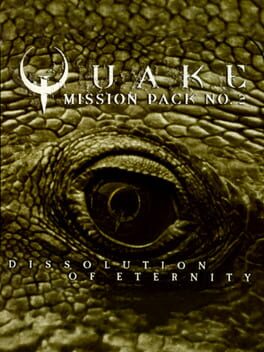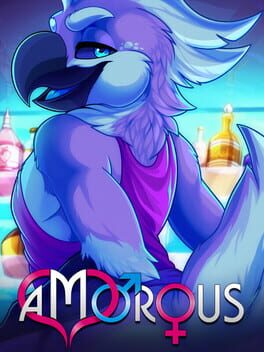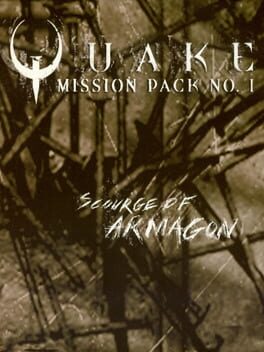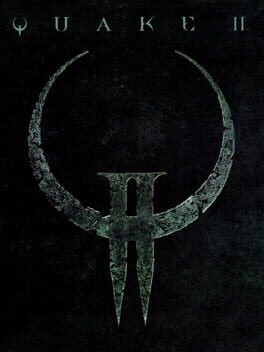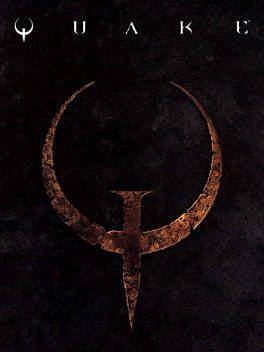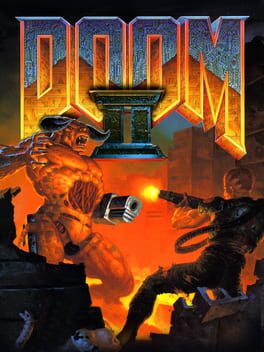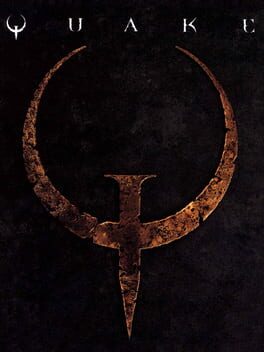ailuridae
BACKER
2016
This is one of the best ways to play the original Resident Evil! It's the original version, but on the go with improved character models and various QoL improvements. You can now quick knife á la Resident Evil 4, reload at any time in combat, and view the map in tandem with the actual gameplay. Best of all: you can skip door animations and most cutscenes, making repeat playthroughs more enjoyable.
There's also a mode called "Rebirth" which is essentially this version's take on the "Arranged" mode from Resident Evil: Director's Cut. Like that mode, key items and enemy placements are shuffled around. However, the volume of enemies is larger, enemies die more quickly, new puzzles leverage the touch screen, and there are on-rails segments where you use the touch screen to slash enemies with your knife. The latter initially seemed like a nuisance, but it won me over with more challenging enemies and a fantastic boss fight. I wouldn't recommend the new mode if this is your first time playing the original Resident Evil, but it's great fun if you've already played the game to death.
There's also a mode called "Rebirth" which is essentially this version's take on the "Arranged" mode from Resident Evil: Director's Cut. Like that mode, key items and enemy placements are shuffled around. However, the volume of enemies is larger, enemies die more quickly, new puzzles leverage the touch screen, and there are on-rails segments where you use the touch screen to slash enemies with your knife. The latter initially seemed like a nuisance, but it won me over with more challenging enemies and a fantastic boss fight. I wouldn't recommend the new mode if this is your first time playing the original Resident Evil, but it's great fun if you've already played the game to death.
2020
Resident Evil 3 feels less like its own game and more like a lengthy coda for 2019's Resident Evil 2. It's pretty dire from a story perspective, with paper-thin characters and a last-minute message about how humanity is the real monster. Also, the dialogue is often atrocious; I don't remember the characters being so annoying in the predecessor. But the worst part is that the game insists on frequently yanking control away from the player. There are moments where your only interaction is holding the left stick forward, watching the character outrun explosions and perform outrageous stunts that would've been cool if you were playing the game. Why is the gameplay-to-QTE ratio so out of whack again? Don't they remember the last time the series became a QTE-ridden action-fest?
Thankfully, the moment-to-moment gameplay evokes the best of Resident Evil 2 and has undergone some thoughtful improvements. The playable characters have a dodge button that, when timed correctly, can deflect enemy attacks. Some of the boss fights feel sleek thanks to this mechanic; the feeling of landing a perfect dodge is akin to a Platinum Games title. The arsenal of weapons is solid, the levels are often thoughtfully designed, and there's a slew of goodies you can unlock by completing in-game challenges. These big positives prevent the game from returning the series to mediocrity, even if the overall game is a bit disappointing.
Thankfully, the moment-to-moment gameplay evokes the best of Resident Evil 2 and has undergone some thoughtful improvements. The playable characters have a dodge button that, when timed correctly, can deflect enemy attacks. Some of the boss fights feel sleek thanks to this mechanic; the feeling of landing a perfect dodge is akin to a Platinum Games title. The arsenal of weapons is solid, the levels are often thoughtfully designed, and there's a slew of goodies you can unlock by completing in-game challenges. These big positives prevent the game from returning the series to mediocrity, even if the overall game is a bit disappointing.
I honestly think I liked Dimension of the Past a little more than the expansion packs. It's very stripped down, with only the base Quake enemies and weapons appearing throughout the ten levels. Where it shines is level design—I don't think I disliked a single level in this episode. The maps are arguably more linear than the previous mission packs, but there aren't many cheap or frustrating moments. This was the first episode I finished on nightmare difficulty, and I rarely felt pressed for ammo compared to points of Scourge of Armagon on normal difficulty. Even though it ends with a bit of a whimper, the rest of the ride makes up for it.
Like the last mission pack, I enjoyed this more than I thought I would. In terms of level design, there are higher highs and lower lows. Some levels are dull, overlong mazes with almost linear progression, while others are enjoyable romps with clear goals pursued in a player-determined order. The new level themes also help the overall mission pack feel visually distinct.
All the new weapons are upgrades of existing ones, and they have separate ammo pools from their base weapons. The upgraded Nailguns are the laziest because both only do additional damage and possess no other differentiating effects. However, the Plasma Gun—an upgrade for the Thunderbolt—fires electrical balls that explode and do lightning-based splash damage, which is fucking awesome. The explosive weapon upgrades are okay, only increasing the number of explosives detonated with each pull of the trigger. The Nightdive version of the game struggles to handle all the explosions at 60 FPS on PlayStation 5. There are no shotgun upgrades, which is a colossal missed opportunity.
Most of the new enemy types suck compared to what Scourge of Armagon offered. Electric Eels aren't too different from Rotfish, Statues are the same as their organic counterparts, and the Hell Spawns can be disposed of so quickly that you might miss how they're distinct from regular Spawns. Worst of all are Wraths, which are essentially just Vores that move quickly and fire faster projectiles. Vores work as enemies because they're mostly stationary; you can avoid damage by keeping them out of view and outpacing their projectiles. You can't do that against Wraths, so encounters with them quickly become frustrating, and the frustration compounds when the designers decide to throw multiple at you in a tight space. Despite all these missteps, I did enjoy the fights against the Guardians and the Dragon. This mission pack is another guilty pleasure.
All the new weapons are upgrades of existing ones, and they have separate ammo pools from their base weapons. The upgraded Nailguns are the laziest because both only do additional damage and possess no other differentiating effects. However, the Plasma Gun—an upgrade for the Thunderbolt—fires electrical balls that explode and do lightning-based splash damage, which is fucking awesome. The explosive weapon upgrades are okay, only increasing the number of explosives detonated with each pull of the trigger. The Nightdive version of the game struggles to handle all the explosions at 60 FPS on PlayStation 5. There are no shotgun upgrades, which is a colossal missed opportunity.
Most of the new enemy types suck compared to what Scourge of Armagon offered. Electric Eels aren't too different from Rotfish, Statues are the same as their organic counterparts, and the Hell Spawns can be disposed of so quickly that you might miss how they're distinct from regular Spawns. Worst of all are Wraths, which are essentially just Vores that move quickly and fire faster projectiles. Vores work as enemies because they're mostly stationary; you can avoid damage by keeping them out of view and outpacing their projectiles. You can't do that against Wraths, so encounters with them quickly become frustrating, and the frustration compounds when the designers decide to throw multiple at you in a tight space. Despite all these missteps, I did enjoy the fights against the Guardians and the Dragon. This mission pack is another guilty pleasure.
2003
2018
There are a few cute characters and H-scenes, but the writing is atrocious. This is one of the worst VNs ever written from an overall narrative standpoint. The routes vary wildly in quality, and the overarching narrative is completely inconsequential. Even worse, the best routes never rise above mediocre, and the dialogue never rises above cringe-worthy.
1996
This review contains spoilers
Pleasant little social game that never really escaped its MUD roots and pixelated GUI. Its focus on text chat and imagined interactions makes it feel almost unrelated to later hits in the genre like Second Life and VR Chat. The choice to lock most of the character creation behind micro-transactions leaves roleplaying and editing maps as the sole attractions for free players. The editing tools are fun, and I've enjoyed creating little levels for sharing with others, but is that enough? My favorite thing to do is explore the interconnected player levels, but knowing that the locations were once populated with invested players makes the whole game feel sad.
I ended up enjoying this more than I thought I would, even if it's pretty rough around the edges. Each episode is dedicated to a whole "theme", so while many of the levels blend together after long play sessions, the designers have more opportunities to explore why particular level themes work. Episode 2 is probably my favorite, as it's chock-full of intricate and challenging medieval levels.
There are some cool additions here: powerups like the Empathy Shield, the laser cannon, and enemies like the flesh-eating and weapon-stealing Gremlin. Unfortunately, many levels are overlong and there's some frustrating trial and error segments related to environmental obstacles. Also, Mjölnir is severely overpowered and the Horn of Conjuring is laughably useless in most situations.
There are some cool additions here: powerups like the Empathy Shield, the laser cannon, and enemies like the flesh-eating and weapon-stealing Gremlin. Unfortunately, many levels are overlong and there's some frustrating trial and error segments related to environmental obstacles. Also, Mjölnir is severely overpowered and the Horn of Conjuring is laughably useless in most situations.
1997
Incredibly distinct level design and a fresh setting make Quake II feel like the least lazy sequel id Software could have created for their new mega-franchise. The art direction and narrative are unfortunately uninteresting, but the interconnected levels, excessive violence, and shredding soundtrack help keep momentum going throughout the single-player experience. The multiplayer is, of course, a ton of fun.
2021
2019
1996
